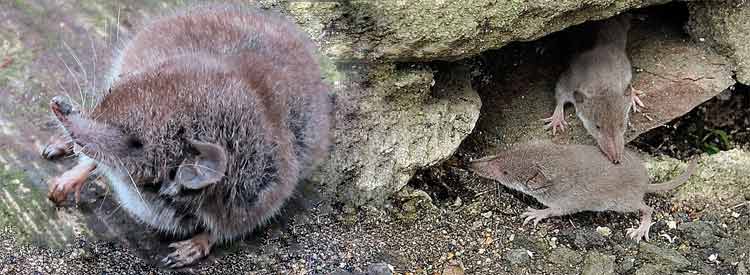A new invasive species of Shrew is spreading across our Tipperary landscape at a rate of more than five kilometres a year, according to new research.
The Greater White-toothed Shrew (Crocidura russula) was first discovered living on our Irish shores in around 2007, first spotted in the regurgitated food remains (pellets) from Barn Owls and Kestrels and collected at some 15 locations around Tipperary. Greater White-toothed Shrews have since been trapped at four different locations in Tipperary, providing compelling evidence that this new species has now become very firmly established.
 This new immigrant species, normally found along the Mediterranean, Netherlands, Belgium, Germany and Portugal, can be identified by their greyish brown hair and a yellowish grey lower belly, together with distinctive bright white teeth, prominent ears and long white hairs on their tails. This non native mammal species possibly arrived here in Ireland hidden amongst horticultural imports such as the root balls of cheaply imported trees, to set up residents in our midst.
This new immigrant species, normally found along the Mediterranean, Netherlands, Belgium, Germany and Portugal, can be identified by their greyish brown hair and a yellowish grey lower belly, together with distinctive bright white teeth, prominent ears and long white hairs on their tails. This non native mammal species possibly arrived here in Ireland hidden amongst horticultural imports such as the root balls of cheaply imported trees, to set up residents in our midst.
This same importation of tree saplings brought us the fungus named Chalara fraxinea, which now has been confirmed as responsible for killing our native ash trees. All of the ash trees affected by this latter fungus are understood to have also been imported as saplings from continental Europe over the same time period.
While there are no known positive effects of the Greater White-toothed Shrew upon humans; the impact on the ecology of habitats in which it is found, remains presently unclear but may turn out to be considerable. These invasive miniature mammals are three times the size of its nearest rival, (weighing in at 8g – 14g) the native well established Pygmy Shrew, (Latter only 3g – 6g).
The Irish native Pygmy Shrew has existed in wild isolation here in Ireland for at least 5,000 years. Therefore, the sudden introduction of this new species, requiring both a larger shared habitat and similar dietary overlap, could now have serious consequences for our Pygmy Shrew. It has already become apparent that the Pygmy Shrew has been rapidly declining here in Co.Tipperary, where as the Greater White-toothed Shrew has instead become well established, spreading at a rate of more than five kilometres per year.
Researchers from University College Dublin (UCD) have warned that within the seven years since these creature were first discovered, it has colonised an estimated 7,600 square km in nine Irish counties, namely Tipperary, Westmeath, Limerick, Cork, Waterford, Kilkenny, Offaly, Laois, and Cork. The reason for this rapid spread is due to the habit of the female of the genus leaving the nest early and moving away to newer territory, possibly to instinctively avoid in-breeding amongst their own species.
This recent influx and rapid growth of this non native mammal is yet another reason for calling a sudden halt to the often wanton destruction of our native birds of prey who feed on this quarry here in Co Tipperary.

We will have to tame them.
Caught 10 of them already near Nenagh. They’re all over the garden.
My home has been invaded by them, caught 3 within 24hrs. They leave evidence everywhere!!
I found 3 dead in St Mary’s Graveyard over the past two weeks.